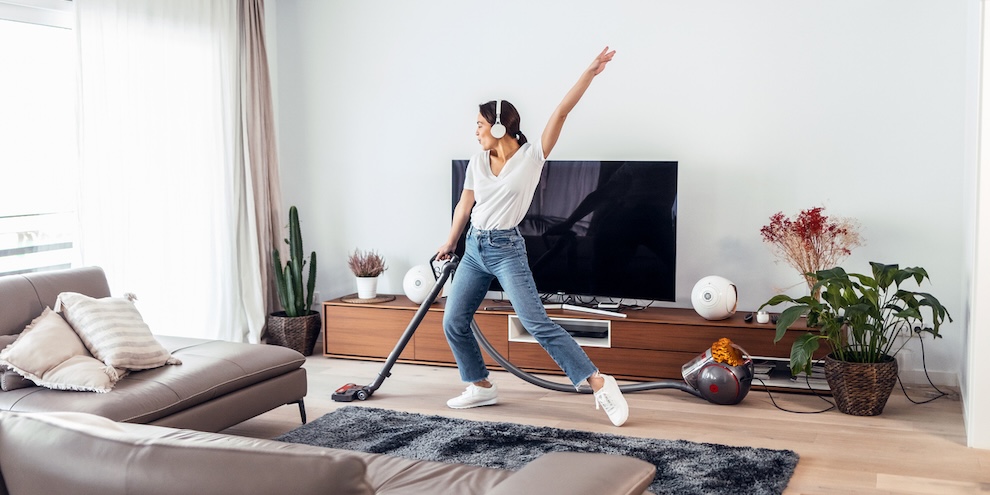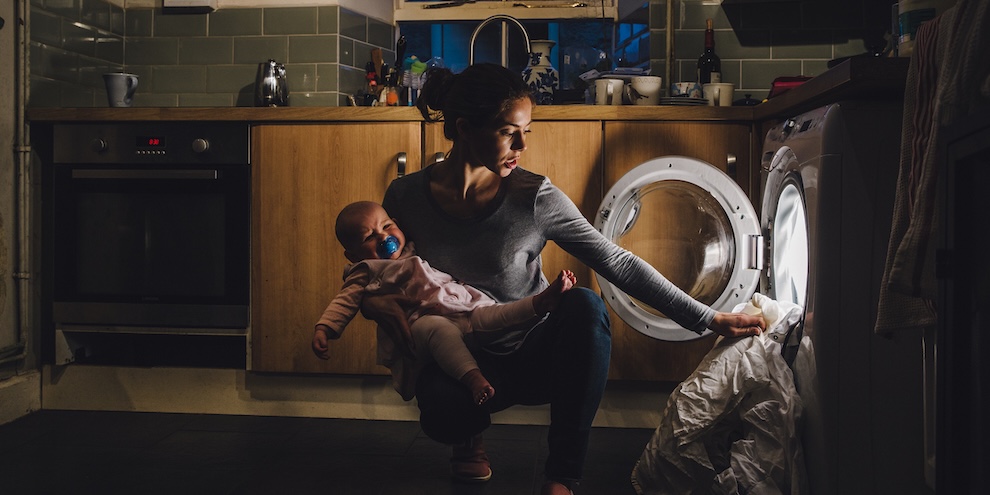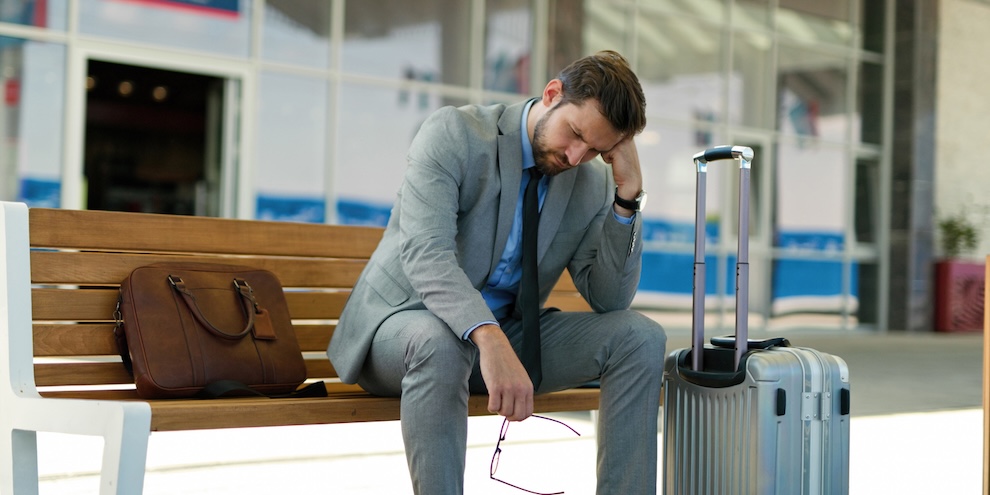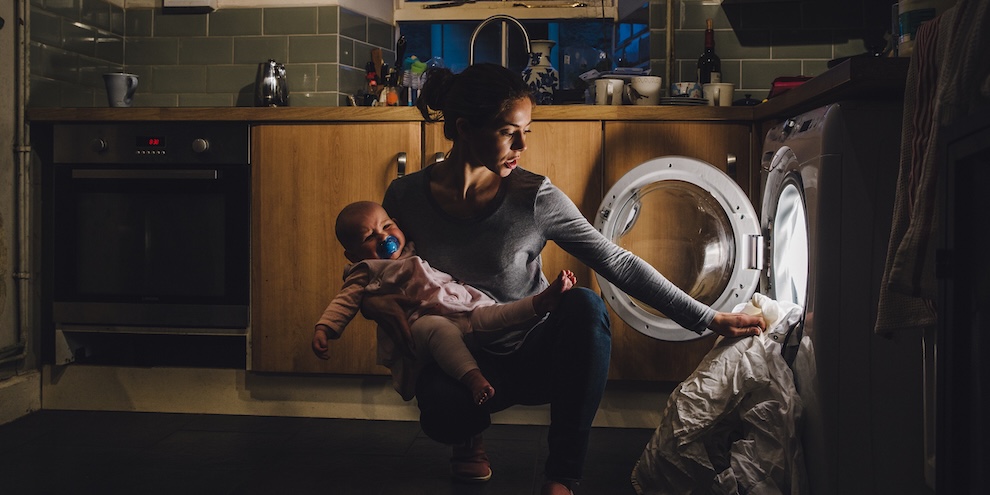••• environmental research
Being sustainable…sometimes
Consumers still wary of greenwashing
 Consumers say it is important to align purchasing decisions with sustainability, however this alignment applies more to some product categories than others, finds digital supply chain company Blue Yonder. While consumers are willing to pay more for sustainable, routinely purchased products such as food, beverage, beauty and cleaning products, they are not as willing to do so for higher-cost occasional purchases like electronics and automobiles.
Consumers say it is important to align purchasing decisions with sustainability, however this alignment applies more to some product categories than others, finds digital supply chain company Blue Yonder. While consumers are willing to pay more for sustainable, routinely purchased products such as food, beverage, beauty and cleaning products, they are not as willing to do so for higher-cost occasional purchases like electronics and automobiles.
Seventy-eight percent of consumers say that sustainability considerations are somewhat or very important when choosing to purchase a product. These considerations are especially important in younger generations like Gen Z (88%) and Millennials (86%) compared to Gen X (77%) and Baby Boomers (66%). From a regional standpoint, this sentiment is most popular in France (86%) followed by Germany (79%), the U.K. (78%), Australia and New Zealand (ANZ) (75%) and the U.S. (74%).
Despite consumers’ best intentions, they may be unwilling or unable to live these values in practice. Consumers face several barriers in aligning their purchasing behaviors with sustainability, chief of which is the higher cost of sustainable products (54%). Consumers seem willing to face the cost of sustainable shopping for some purchases but not others. When asked which product categories they’ve focused their sustainability efforts in, consumers cited food and beverage (48%), cleaning products (37%), personal care and beauty (30%) and clothing and footwear (26%) the most. More expensive categories like appliances (20%), consumer electronics (19%) and automotive (19%) proved less popular.
Sixty-five percent of consumers say that they are prepared to increase their spending, with 47% reporting a willingness to spend an additional 5% to 9.9% more on sustainable products, most notably among Gen Z (52%) and Millennials (50%). An additional 14% of consumers are willing to spend 10% to 19.9% more, while 4% are willing to spend more than 20%. Just over one-third (36%) are not willing to spend more on sustainable products, which is especially true among Baby Boomers (52%) and regions including ANZ (42%), the U.K. (39%) and the U.S. (38%).
Sustainability continues to be incorporated into corporate messaging yet only 20% of consumers believe that brands are accurately communicating their sustainability initiatives in their ads and marketing. The trust is highest in France (25%), followed by the U.S. (23%), Germany (22%), the U.K. (17%) and ANZ (13%). However, U.S. consumers have grown more trusting of these claims in the past year, increasing from 17% in 2024.
In contrast, one-quarter (25%) of consumers feel they cannot trust a brand's sustainability claims, with 17% saying they feel the need to do additional research and 9% saying they feel brands capitalize on sustainability as a trend regardless of whether their actions are authentic or not. However, the majority (55%) of consumers feel they can sometimes trust brands’ sustainability claims, depending on the message, brand or history. Opinions vary on who bears primary responsibility for upholding sustainability efforts. One-third (33%) say the onus is on brands and corporations, 28% say it should be government agencies and policymakers and 32% say everyone has a role to play. Only 8% say environmental nonprofits and advocacy groups bear responsibility.
Consumers are willing to increase delivery timeframes for sustainable purchases, with 30% willing to delay one to two days and 36% willing to wait up to five days. Fifteen percent of consumers are willing to wait up to one week for their deliveries if it means being more sustainable. Consumers are split on the role AI will play in sustainability. One-third (33%) of respondents are optimistic that the technology could lead to new innovations and more sustainable outcomes, but an equal share (33%) say they are unaware of how it might be beneficial while 12% do not believe it will have a significant effect on sustainability. The remaining 22% of consumers are concerned about the increased environmental impact of AI and data centers.
The Blue Yonder 2025 Sustainability Survey was fielded by a third-party provider in February 2025. It surveyed 5,000+ consumers across Australia and New Zealand, France, Germany, the U.K. and the U.S.
••• consumer insights
A fresh start
‘Tis the season for spring cleaning
 Cleaning in spring will be in full swing as 80% of Americans plan to participate in the annual deep-clean routine. The American Cleaning Institute found that among spring cleaners, nearly half (45%) say they anticipate they’ll clean or organize more than usual this year.
Cleaning in spring will be in full swing as 80% of Americans plan to participate in the annual deep-clean routine. The American Cleaning Institute found that among spring cleaners, nearly half (45%) say they anticipate they’ll clean or organize more than usual this year.
Sixty-eight percent of respondents believe cleaning and hygiene are very important for public health and the health of their community. Fifty-two percent strongly agree and 39% somewhat agree that cleaning has a positive effect on physical health while 46% strongly agree and 38% somewhat agree that it has a positive effect on mental health.
To stay healthy, respondents say they prioritize washing their hands frequently (61%), cleaning the toilet and shower (56%), disinfecting frequently touched surfaces (47%), doing laundry (47%) and washing the sheets (40%), dusting surfaces (22%) and cleaning hard to reach places (19%).
Eighty percent of respondents say they engage in spring cleaning at least once a year, 9% participate every other year, 5% say every three to four years and 3% say they never spring clean. Of all 2025 participants who spring clean, most anticipate cleaning more than usual, 6% will clean less than usual and 49% anticipate cleaning the same as previous years.
When evaluating cleaning products, respondents say effectiveness (39%) is the most important factor, followed by cost (18%) and the ability to get multiple jobs done (13%). Others say brand (9%), the scent or fragrance (6%) and sustainability benefits (5%) are the most important factors.
Spring cleaning is also a time to target areas in the home that tend to be overlooked in daily and weekly cleaning routines. The top areas Americans plan to tackle include floors/baseboards (80%), behind furniture (76%), storage spaces including the garage, attic, basement, shed and closets (75%), windows (75%) and their appliances (73%).
The American Cleaning Institute Spring Cleaning Survey was conducted by Wakefield Research among 1,000 nationally representative U.S. adults from February 10-18.
••• small business research
Optimism in-store
Confidence surges among small business owners
While inflation and rising costs are still causing concern for small business owners, they are approaching the future with more confidence than ever. After a couple years of unpredictability, small business owners had no choice but to adapt, finds banking platform Bluevine. Unlike larger corporations, small and midsize businesses have had to adjust in real time – learning how to operate lean, stay agile and keep moving forward despite headwinds.
Optimism among small business owners is higher than ever, with 79% expressing confidence in their overall business outlook, up from 73% found in the Mid-Year BOSS Report. Expectations for profitability have risen from 72% to 77% and revenue forecasts have increased from 70% to 76%. More than half (57%) of small business owners finished 2024 better than they expected.
Small and midsize businesses don't have the luxury of waiting to see what happens with changing economic conditions – like inflation or interest rates – they make real-world moves because they have to. Forty-one percent of small business owners adjusted their 2025 spending plans due to the economic landscape of 2024 – an uptick from 35% in mid-2024. Payroll remains the largest expense, followed by materials, supplies and rent. Material costs have become a much bigger concern for solo business owners, with 56% now listing it as a top concern, up from 43%.
Nearly half (45%) of small business owners have raised prices on certain products or services while 20% have raised prices across the board. Inflation continues to be a significant challenge, with 64% naming it as a top concern. Taxes and fees are also on the radar for 55% of small business owners. Particularly noteworthy is the rise in concern over tariffs, which jumped from just 5% in mid-2024 to 13% today.
Access to capital remains crucial for small business owners, with growth and expansion (52%) and working capital (47%) topping the list of reasons to seek new funds. Bank loans continue to be the preferred choice, with three out of four small business owners opting for traditional bank loans. Roughly half (45%) of small businesses plan to keep spending the same, 15% expect to increase spending and 41% plan to cut spending.
While optimism is high, business owners still hesitate to make new hires. Sixteen percent have paused hiring or reduced headcount in 2024 and 18% say they have hired freelancers instead of full-time employees to control costs. Fifty-five percent don't expect to make changes when it comes to hiring plans, 20% will hire more employees than planned and 25% will hire less people than planned.
Research firm Bredin conducted this study with 1,200 small business owners from November 14-27, 2024.
••• family research
The things we do for love
Parents address stressors and life changes
 Parents manage a complex web of responsibilities, with the average parent indicating they are responsible for five loved ones including their children, aging parents and pets. Care.com finds that nearly half (48%) of parents say they don’t have enough help. The emotional and mental load is staggering, with 90% of parents losing sleep, feeling burnt out (90%), sacrificing other goals in life (85%) and crying (80%, increasing to 90% for moms). Others say they have felt isolated/alone (78%), a sense of dread (75%) and 71% have experienced health issues.
Parents manage a complex web of responsibilities, with the average parent indicating they are responsible for five loved ones including their children, aging parents and pets. Care.com finds that nearly half (48%) of parents say they don’t have enough help. The emotional and mental load is staggering, with 90% of parents losing sleep, feeling burnt out (90%), sacrificing other goals in life (85%) and crying (80%, increasing to 90% for moms). Others say they have felt isolated/alone (78%), a sense of dread (75%) and 71% have experienced health issues.
Finding care isn’t a one-and-done affair. Parents have to find new care solutions for reasons like schedule changes (31%), budget changes (26%) and needing one-time help (18%). Each search is time-consuming, with more than half (52%) of surveyed parents taking two months or more to find the right caregiver. For daycare in particular, waitlists plague more than half (57%) of parents, with 55% facing a wait of four months or longer. As a result, 52% of parents report being very to extremely stressed when they need to find a new caregiving solution.
The average parent spends 22% of their household income on childcare and 18% on the care of older loved ones, pets and the home. To pay for these expenses, 33% have tapped into their savings, with the average parent spending one third (29%) of their savings on childcare alone.
The average parent has just three hours a day to themselves, moms report only having two hours, and parents miss out on 34 important life commitments per year (2.8 per month), on average, due to challenges of finding care. This includes travel (37%), birthdays (34%), holidays (33%), weddings (21%), baby showers (15%) and funerals (14%). The challenges of finding and affording care also takes a toll on personal relationships. Fifty-two percent say they miss out on spending time with friends and 46% say they lack quality time with their significant other.
Almost all (89%) respondents say they or their partner have had to make at least one major change to their work, life or finances to afford care last year, such as reducing spending on entertainment and leisure activities (40%), delaying major purchases (32%), taking on multiple jobs (24%) and even going into debt (20%). Others have moved closer to family (14%), changed jobs (13%), left the workforce (7%) and 6% have quit their studies.
This sample of 3,000 U.S. adults was surveyed between November 11-20, 2024.
••• travel research
When getting away is no vacation
Tech fixes travel woes
 Despite the encouraging traveler volumes seen in many markets, travelers continue to be affected by a range of frustrations while on a journey, according to travel and tourism technology company Amadeus. When asked where friction originates while on a trip, U.S. travelers point to dealing with delays/cancellations (68%), the combined cost of traveling (50%), coordinating travel between multiple people (47%), navigating security and border control at an airport (46%) and finding suitable accommodations (38%).
Despite the encouraging traveler volumes seen in many markets, travelers continue to be affected by a range of frustrations while on a journey, according to travel and tourism technology company Amadeus. When asked where friction originates while on a trip, U.S. travelers point to dealing with delays/cancellations (68%), the combined cost of traveling (50%), coordinating travel between multiple people (47%), navigating security and border control at an airport (46%) and finding suitable accommodations (38%).
When segmented by type of traveler, business travelers generally experienced more friction than those traveling for leisure. A higher number of business travelers say comparing prices across sites (44% vs. 39%), understanding fees and taxes (42% vs. 36%) and finding suitable accommodation options (45% vs. 33%) are more distressing than leisure travelers. U.S. travelers experience the most distress at airport security (49%), airport check-in (45%) and while navigating the airport (45%).
Further differences were identified when comparing different age demographics, income levels and familiarity with traveling. A surprising 49% of Gen Z travelers say finding the correct routes and schedule for a trip is distressing, compared to only 35% of those 65+. Forty-six percent of younger travelers find sourcing accommodation distressing while others worry about figuring out what to do once they arrive at their destination (35%). Fifty-six percent of young travelers, 33% of those 55-64-years-old and 30% of those 65+ have actively avoided taking a trip due to anticipated obstacles or disruptions.
Forty-five percent of respondents reporting an annual household income of $30,000 or less say finding suitable accommodation is either very or somewhat distressing, and 67% find delays very or somewhat distressing, compared to 75% of respondents reporting an annual household income of more than $150,000.
Technology can have the biggest effect in overcoming the gaps that currently exist in the traveler experience. When asked how helpful technology is at reducing travel-related distress, mobile apps for planning (89%), automatic rebooking for delays (86%), digital bags/baggage tracking (86%), integrated travel booking across airlines and hotels (86%) and fully digital identification and travel documents (86%) were cited as useful by most travelers. Others found personalized travel recommendations (80%), biometric screening (80%), virtual assistants for travel queries (77%) and augmented reality (75%) helpful.
While tech is important, travelers want more human interactions throughout airport security and border control (44%) and at hotel or accommodation check-in and checkout (43%). Leisure travelers also see a significant role for human input when it comes to planning almost any type of journey, led by family trips, where 47% of respondents want more human interaction. This is followed by accessibility-focused trips (47%), cruises (46%) and solo (43%) and group (40%) trips.
Amadeus commissioned Mercury Analytics to survey a total of 1,013 U.S.-based travelers during the third quarter of 2024.
••• advertising research
No, you may not track me
Americans unsettled by personalized ads
 As ad personalization increases, so does the feeling of unease. A majority (54%) of Americans say they are creeped out when they see advertisements that are personalized based on their online behavior. According to YouGov, U.S. consumers are the least comfortable with personalized advertising while consumers in Hong Kong, India and the United Arab Emirates are the most comfortable with them.
As ad personalization increases, so does the feeling of unease. A majority (54%) of Americans say they are creeped out when they see advertisements that are personalized based on their online behavior. According to YouGov, U.S. consumers are the least comfortable with personalized advertising while consumers in Hong Kong, India and the United Arab Emirates are the most comfortable with them.
Discomfort with personalized advertising increases with age. Fifty percent of Gen Z and Millennials say it makes them uncomfortable, while 62% of Gen X and Baby Boomers feel creeped out. Fifteen percent of Gen X and Baby Boomers and 22% of Gen Z and Millennials say they are comfortable with companies using online behaviors for ad personalization. Four percent of Gen X and Baby Boomers and 7% of Gen Z and Millennials are unsure of how they feel.
Ads served based on browsing history are viewed as the most invasive, with 59% of Americans calling them out. Others say ads based on social media behavior (48%), purchase history (42%) and location-based ads (35%) and retargeted ads (30%) are invasive. Nine percent of Gen X and Baby Boomers and 13% of Gen Z and Millennials say none of these are invasive.
Over half of Americans (56%) and Brits (56%) are uncomfortable with companies using online behavior to personalize advertising, higher compared to other countries including France (51%), Sweden (50%), Canada (45%), Germany (47%), Spain (48%) and Australia (41%).
The option to opt out (52%) of personalized ads topped the list of factors that would make many U.S. consumers more comfortable with personalized ads. Thirty-five percent say they would be more comfortable if they could opt for a minimal data collection option. Others would be more comfortable with personalized ads if they had clear privacy policies (33%) or only used anonymized data (30%). Forty-four percent of Americans have an ad blocker always running on their web browser or phone to combat ad targeting.
Twenty-seven percent of Americans agree that personalized ads are helpful for discovering new products, with this percentage increasing to 30% for Gen Z and Millennial consumers. Thirty-three percent of Gen Z and Millennials and 45% of Gen X and Baby Boomers disagree that personalized advertising is helpful for finding new products. Other countries including Australia (47%), India (67%), Mexico (55%) and Singapore (44%) agree that personalized ads are helpful.
The insights were sourced from YouGov Surveys. The survey was conducted from December 16, 2024, to January 2, 2025, with 1,502 respondents in the U.S.

